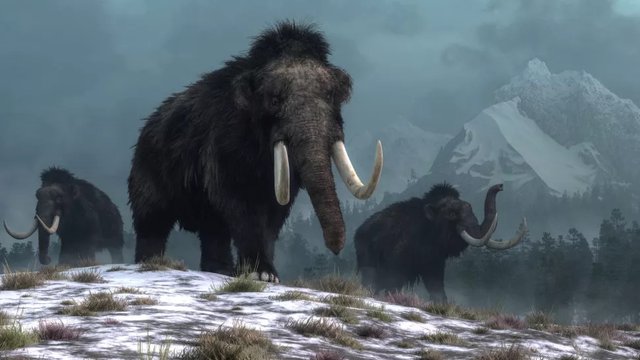
Chapter VIII of Immanuel Velikovsky’s Earth in Upheaval is called Poles Displaced. In this chapter Velikovsky explores a number of possible causes of ice ages. The opening section, The Cause of the Ice Ages, is introductory in nature.
One after the other, scenes of upheaval and devastation have presented themselves to explorers, and almost every new cave opened, mountain thrust explored, undersea canyon investigated, has consistently disclosed the same picture of violence and desolation. Under the weight of this evidence two great theories of the nineteenth century have become more and more strained: the theory of uniformity and the theory of evolution built upon it. The other fundamental teaching originating in the nineteenth century—the theory of ice ages—has been loaded more and more heavily with the responsibility for the geological facts revealed; however, the cause of the ice ages remained a much-discussed and never-agreed-upon subject. (Velikovsky 99)
Velikovsky arranges the different theories of the causes of ice ages under three broad headings:
- Astronomical
- Geological
- Atmospherical
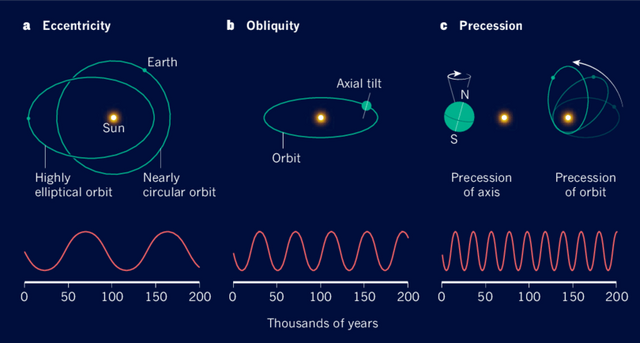
Among the astronomical theories are the following:
The space through which the solar system traveled was not always of equally low temperature, the variations being due to gases or dust present in some areas. This idea has been abandoned.
The sun is a variable star emitting more heat at some periods and less at others. This theory also failed to be substantiated and was generally rejected; yet sporadically it finds new proponents—Barbara Bell, Science Newsletter, May 24, 1952.
Ice ages arrive when a hemisphere, the Northern or the Southern, happens to have its winter while the globe is at the farthest end of its ellipse [aphelion], as the Southern Hemisphere is at present. The winter would be a little longer and colder; however, the summer, though a bit shorter, would be hotter, and if the earth always traveled on its present orbit, the described variations would not bring about an ice age.
It was also claimed that the terrestrial orbit becomes alternately more and less stretched.
That last theory, to which Velikovsky accords just a single line, is an integral part of Milutin Milankovitch’s theory of ice ages, which is probably the one that garners the most support among modern climatologists. Velikovsky discusses this theory in the fourth section of this chapter.
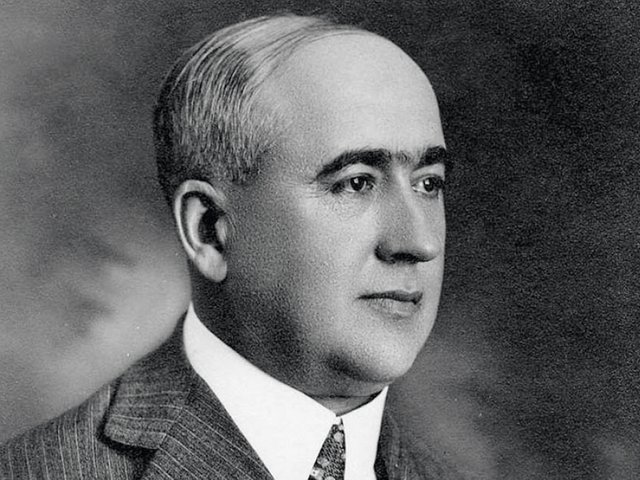
Barbara Bell was an American astronomer, who worked for most of her career at the Harvard College Observatory. The article Velikovsky cites is an anonymous report of a talk Bell gave at a Symposium on Climatic Change at Boston in May 1952. The symposium was chaired by Velikovsky’s nemesis Harlow Shapley, the academic who had tried to suppress the publication of Worlds in Collision in 1950:
The Ice Ages were probably caused by changes in the tremendous outpouring of energy from the sun, Dr. Barbara Bell of the Harvard College Observatory suggested at a Symposium on Climatic Change in Boston.
Variations in the solar constant, a measure of the sun’s radiation received on the earth, seem to be required, she said, to explain how climatic conditions have varied over a long period of time, with the great ice sheets advancing during glacial, or very cold, periods, then later retreating. (Science News Letter 324)
The name of the journal is Science News Letter (now Science News), not Science Newsletter, as Velikovsky has it.
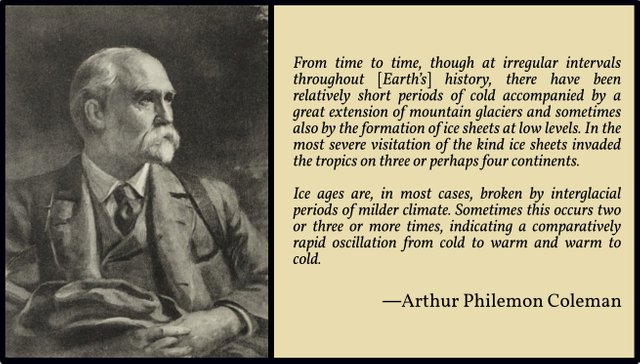
Among the geological theories we have the following:
A change in the activity of warm springs. This was shown to be inadequate.
A change in the direction of the Gulf Stream, which carries water warmed in the Caribbean Sea to the northern Atlantic; if there were no Isthmus of Panama, and North and South America were separated, a part of the stream from the Caribbean would flow into the Pacific. This was also shown to be inadequate. Also, the paleontological survey of sea fauna on both sides of the isthmus suggests that the dividing strip of land existed long before the advent of the Ice Age.
The changing altitude of the continents, which would also influence the direction of winds and precipitation.
This last theory still has its adherents, but it has been refuted by the Canadian geologist Arthur Philemon Coleman, Emeritus Professor of Geology at the University of Toronto:
When one considers the distribution of ice sheets in the Pleistocene, covering 4,000,000 square miles [10 million km2] of North America and half as much of Europe, as well as Greenland, Iceland and Spitzbergen; and also the greatly lengthened glaciers of the Rocky Mountains, the Alps, the Himalayas, the Andes, the Atlas Mountains, Ruwenzori and its fellow peaks in central Africa, Kosiusko in Australia, the southern island of New Zealand, and Patagonia in South America, it becomes evident that all parts of the world could not have been elevated at once. The theory breaks down of its own weight. Besides, it is possible that in some important regions a lowering of the land would increase glaciation. It has been suggested that this would be the case in the Antarctic continent.
It cannot be doubted that elevation above snowline would cause local glaciation, but there is no evidence that large scale ice sheets can be formed in this way, and that a universal refrigeration, like that of the Pleistocene, could be produced thus is manifestly impossible. (Coleman 256)
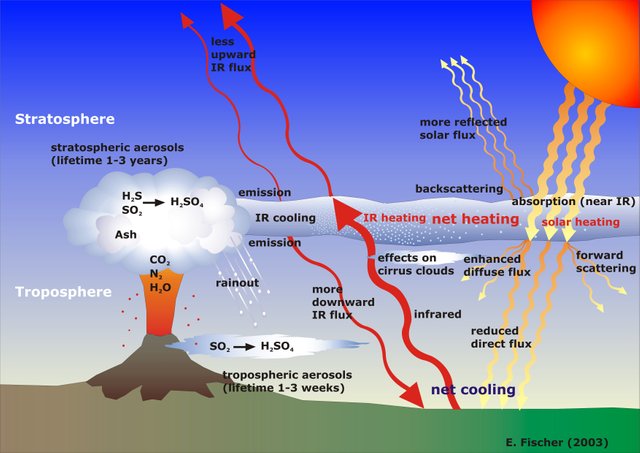
Finally, among the atmospherical theories Velikovsky mentions only the following two:
Of the atmospheric conditions that could effect a rise or drop in temperature, the varying quantity of carbon dioxide in the air and also of dust particles was called on to explain the changes in temperature in the past. With the diminution of the carbon dioxide content in the air there would be a fall in the temperature, but it was demonstrated by calculation that this could not have been sufficient to cause the Ice Age.
If the earth were enveloped in clouds of dust that kept the rays of the sun from penetrating to the ground, there would be a fall in temperature. However, one would have to explain where such extensive and thick clouds of dust in the atmosphere could come from. Volcanism is an obvious answer, but one then has to explain why volcanic ash and dust would remain suspended in the atmosphere long enough to cause an ice age (Coleman 270-271).
The first of these is, of course, the greenhouse effect, which is now routinely trotted out to explain every variation in the planet’s climate. No citation is given for the claim that a diminution in the amount of carbon dioxide in the atmosphere would not cause an ice age, but I presume Coleman is Velikovsky’s source. He devotes three pages to the argument, but ultimately finds it wanting:
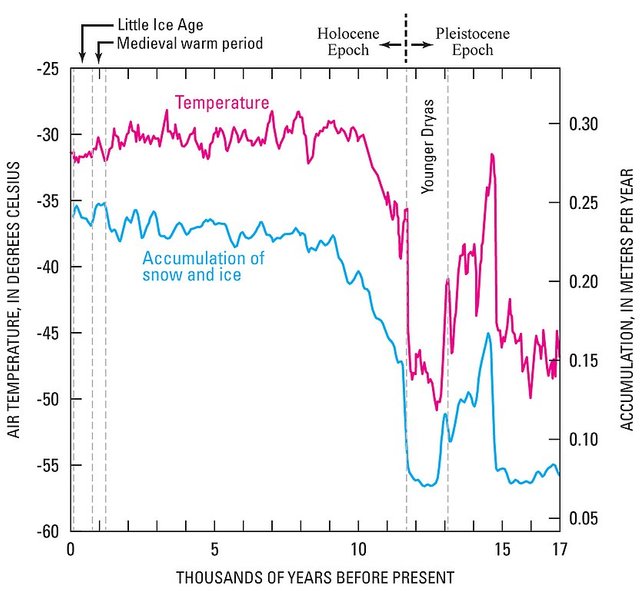
Changes in the amount of carbon dioxide in the air must be slow, and the theory does not account for the rapid climatic variations demanded by interglacial periods. (Coleman 269-270)
We now know that while there is a close correlation between the Global Mean Surface Temperature (GMST) and the concentration of carbon dioxide in the atmosphere, the latter lags behind the former, proving that it cannot possibly be driving climate change.
When the GMST drops, the oceans cool.
Cool water can hold more gas in solution than warm water.
Therefore as the GMST drops, carbon dioxide migrates out of the atmosphere and into the oceans.
Therefore the concentration of carbon dioxide in the atmosphere drops dramatically during glaciations.
When the Earth starts to warm up, the reverse happens. The oceans warm, carbon dioxide comes out of solution and returns to the atmosphere, greatly increasing the atmospheric concentration of CO2. The fact that the Earth emerges from a glaciation when the concentration of atmospheric CO2 is very low proves that CO2 does not drive major climate change.
It takes several centuries for the oceans to cool down or warm up in response to changes in the GMST, which is why the CO2 graph lags about 800 years behind the temperature graph. This also means that any climate-induced changes in sea level that are occurring today have nothing to do with us: they are a delayed response to the Medieval Warm Period 800 years ago. Climate alarmists have been bending over backwards to explain away these graphs, the explanation of which is actually quite obvious:
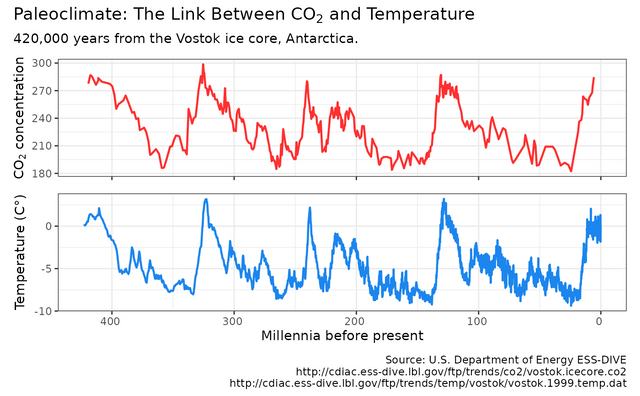
Velikovsky quotes Coleman again on the current lack of consensus on the question of the causes of ice ages:
Scores of methods of accounting for ice ages have been proposed, and probably no other geological problem has been so earnestly discussed, not only by geologists but by meteorologists and biologists; and yet no theory is generally accepted. (Coleman 246)
It is, in fact, from this page of Coleman’s text that Velikovsky took his threefold classification of the various theories of the Ice Age:
In general the theories intended to explain the causes of ice ages may be classed as geological, meteorological or astronomic. In many cases, however, causes of more than one sort are combined, so that a strict separation is not possible. (Coleman 246)
Velikovsky concludes this section by mentioning a few anomalies that a successful theory of ice ages must explain:
A true theory of the origin of ice ages, whether resorting to astronomical, geological, or atmospheric causes, must also explain why ice ages did not occur in northeastern Siberia, the coldest place on earth, but did occur in temperate latitudes, and in a much more remote past in India, Madagascar, and equatorial Brazil. None of the theories mentioned explains these strange facts. Hypotheses concerning warmer and colder areas in space, or the variability of the sun as a source of energy, are especially inadequate to account for the geographical distribution of the ice cover. Thus the concept of ice ages, which is established in science as one of its most definite facts, serving also as a foundation for the theory of evolution, has no explanation itself. (Velikovsky 101)
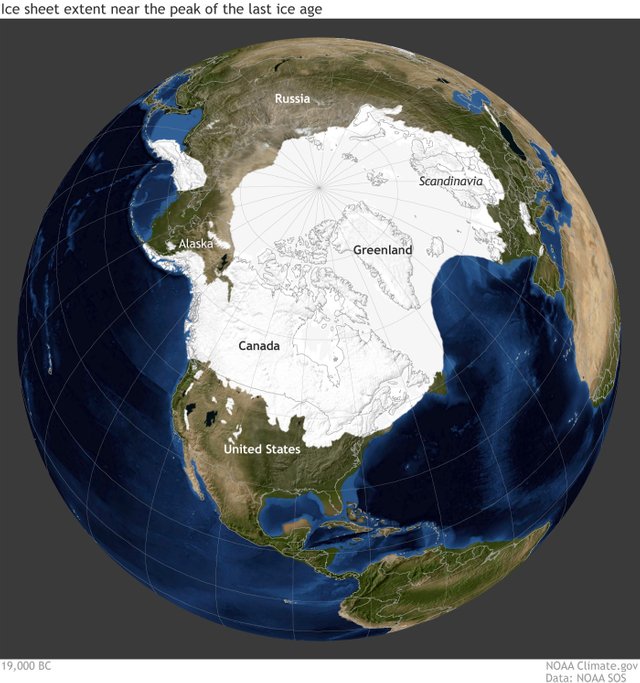
No citation is given, but Velikovsky probably took these anomalies from Coleman, who mentions them all. For example:
In earlier times it was supposed that during the Glacial Period a vast ice cap radiated from the north pole, extending varying distances southward over seas and continents. It was presently found, however, that some northern countries were never covered with ice, and that in reality there were several more or less distinct ice sheets starting from local centers and expanding in all directions, north as well as east and west and south. It was found, too, that these ice sheets were distributed in what appeared to be a capricious manner. Siberia, now including some of the coldest parts of the world, was not covered, and the same was true of most of Alaska and the Yukon Territory in Canada; while northern Europe, with its relatively mild climate, was buried under ice as far south as London and Berlin; and most of Canada and the central and eastern United States was covered, the ice reaching as far south as Cincinnati in the Mississippi Valley. (Coleman 7-9)
I am surprised that Velikovsky did not close this section by quoting Coleman’s Conclusions, with which he ends his book. He even uses the C word:
In the foregoing chapters an outline has been given of the principal theories which have been put forward to account for ice ages; and it is evident that no single theory is universally accepted and that difficulties have been raised against all of them. It may be expected that the present writer, after pointing out defects in all the previous attempts to solve the tangled problems of glacial periods, should propose something which he considers more satisfactory. This I do not feel competent to undertake. During many years of study of glaciation I have hoped to find a solution of the difficulties in several theories at different times but have always encountered some point where they failed.
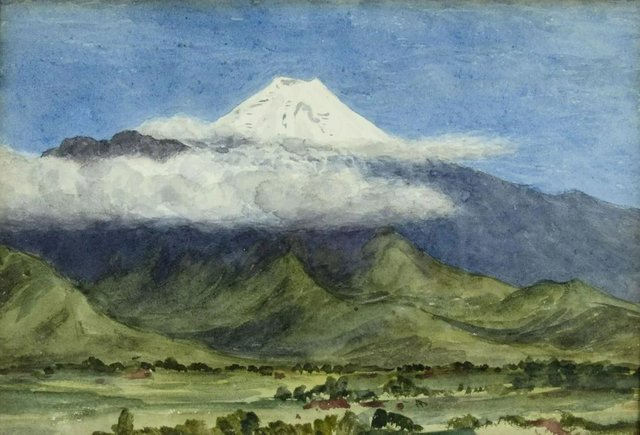
One must account for a worldwide refrigeration affecting all zones of both hemispheres at the same time, but with a focusing of great ice sheets in special regions, as near the north Atlantic in the Pleistocene; and one must provide for the relatively rapid alternations of cold and warm conditions demanded by a succession of glacial and interglacial periods.
In my opinion no single cause, as expressed in one of the theories proposed, can accomplish this; and any final solution of the complicated problems involved must come from a conjunction of general and local causes. Some combination of astronomic, geologic and atmospheric conditions seems to be necessary to produce such catastrophic events in the world’s history. The rarity of such a conjunction would account for the comparatively few and irregularly spaced times of glaciation which interrupt the usual monotonous continuity of mild conditions shown by palaeontology. (Coleman 282, my emphasis)
Another significant anomaly that Coleman mentions is the irregular spacing of ice ages in the earth’s history and their widely different severity, which is more suggestive of catastrophism than uniformitarianism (Coleman 279, 245).
It should be clear to anyone who pages through Coleman’s Ice ages Recent and Ancient that this book was the principal source Velikovsky relied upon when he wrote this section. For example, when Velikovsky says that the idea that ice ages were caused by variations in the temperature of the space through which the solar system traveled has been abandoned, he is referring to a section of Chapter XV of Coleman’s book, in which he briefly discusses this theory. Coleman concludes that such variations could, in theory, account for periods of universal mild climate on the earth, but not for periods of cold (Coleman 281). His final verdict on this idea:
Such vague and accidental causes for climatic changes should be appealed to only as a last resort unless positive proof at some time becomes available showing that an event of the kind actually took place (Coleman 282)
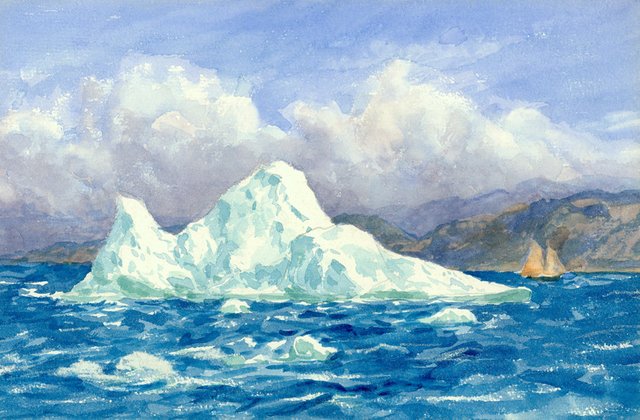
And that’s a good place to stop.
References
- Anonymous, Sun Energy Changes, Science News Letter, Volume 61, Number 21, Page 324, Society for Science & the Public, Washington, DC (1952)
- Arthur Philemon Coleman, Ice Ages Recent and Ancient, The Macmillan Company, New York (1926)
- Immanuel Velikovsky, Earth in Upheaval, Pocket Books, Simon & Schuster, New York (1955, 1977)
Image Credits
- Lords of the Ice Age: © Daniel Eskridge (artist), Fair Use
- Milankovitch Cycles: © Mark Andrew Maslin (designer), Fair Use
- Milutin Milankovitch: Anonymous Photograph, Virtual Library of Serbia, Public Domain
- Arthur Philemon Coleman: J R L Forster (artist), Public Domain
- Volcanic Winter: Erich Fischer (designer), PAGES/CLIVAR Intersection Working Group, After Alan Robock, Volcanic Eruptions and Climate, Reviews of Geophysics, Volume 38, Issue 2, Pages 191-219, Plate 1, American Geophysical Union, Wiley-Blackwell, Hoboken, New Jersey (2002), Fair Use
- Rapid Climate Change in the Late Pleistocene Epoch: United States Geological Survey, Public Domain
- Carbon Dioxide Lags Temperature: US Department of Energy, ESS-DIVE, Public Domain
- Maximum Glaciation of the Pleistocene Ice Age: NOAA SOS, Public Domain
- Landscape: Mount Orizaba: Arthur Philemon Coleman (artist), Private Collection, Public Domain
- An Iceberg off the Labrador Coast: Arthur Philemon Coleman (artist), Private Collection, Public Domain
